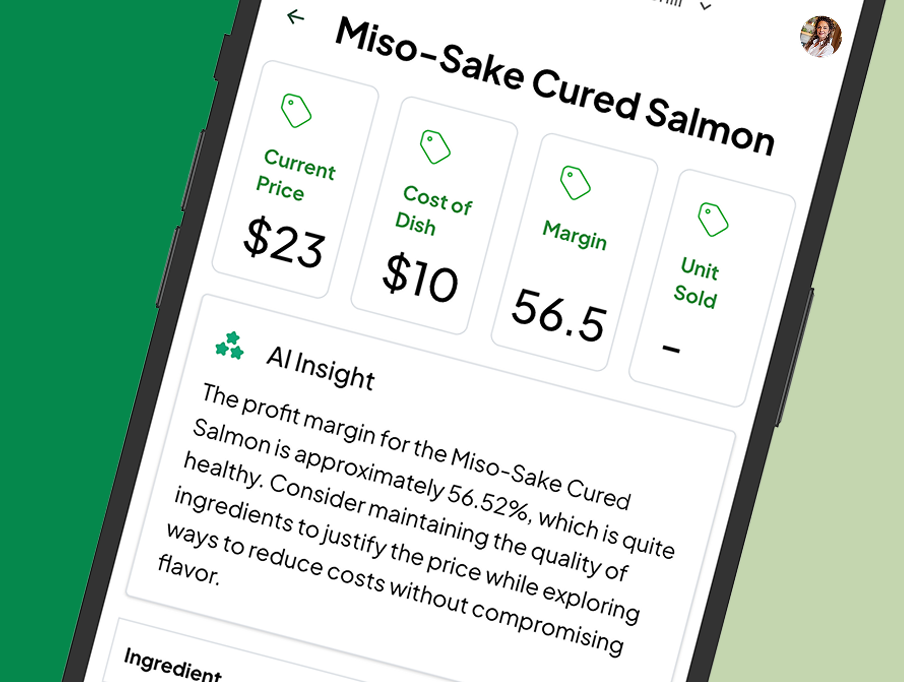There’s a quiet moment in every restaurant—usually right before the dinner rush—when managers take a deep breath, scan the floor, and silently count who showed up.
It’s no longer just a check-in routine. It’s a daily gamble. Will the dishwasher come in today? Did the new server ghost after two shifts? Is the prep cook still answering their phone?
If you’re in the restaurant business, you already know: staffing has become one of the most unpredictable and frustrating parts of running a restaurant. And it’s not getting easier.
At MRGN, we work closely with small and medium-sized restaurants, helping them make financial decisions in real-time—like whether to hire more staff or cut costs elsewhere. Over and over again, we’re hearing the same thing from our users: “We can’t find good people. And when we do, we can’t keep them.”
So, what’s really going on? Why is staffing so much harder than it used to be—and what can restaurant owners actually do about it?
Let’s unpack this.
Post-Pandemic Burnout Is Real—and Lingering
We’re now several years past the peak of the COVID-19 crisis, but the restaurant workforce hasn’t fully recovered. Many workers who left the industry during the shutdowns never came back. They found other jobs—ones with better hours, higher pay, or just less stress. And honestly? Who can blame them?
The pandemic forced a collective reckoning. Restaurant workers were some of the hardest hit: laid off overnight, overworked when things reopened, and often left feeling undervalued and burned out. It created a lasting shift in how people think about hospitality work.
Restaurants are now competing with other industries that offer more predictable hours, remote work, and higher base salaries. For many, it’s a hard sell to return to hot kitchens, double shifts, and an increasingly demanding customer base.
The Great Reshuffle Changed the Labor Landscape
The labor market hasn’t just recovered—it’s transformed. What used to be “just a job” for many in food service is now being weighed against gig economy options, remote customer service roles, and even entrepreneurial ventures.
Workers today are prioritizing flexibility, work-life balance, and mental health more than ever. And for younger generations entering the workforce, the idea of staying late to clean grease traps for minimum wage feels… well, outdated.
Restaurants, meanwhile, are still operating on razor-thin margins, making it difficult to raise wages or offer benefits that would attract and retain top talent. The result? A frustrating game of hiring whack-a-mole, where managers are constantly recruiting, training, and repeating the cycle—sometimes within the same week.
Reliability Is the New Gold Standard
It’s not just about finding people. It’s about finding people you can count on. At MRGN, we’ve seen how a single unreliable employee can throw an entire night off balance. Late arrivals lead to slower service. Missed shifts cause chaos. And customer experience suffers almost instantly.
Restaurant work requires rhythm. It’s a delicate dance of timing, communication, and anticipation. And when even one person is out of sync, the whole experience falls apart—not just for your staff, but for your guests.
Today, reliability has become more valuable than experience. Owners are often willing to train someone with no background as long as they show up, work hard, and stick around. But finding even that kind of employee is increasingly rare.
Training Feels Like Throwing Money Into the Wind
Here’s the kicker: even when you do find someone promising, investing in training feels like a gamble. One restaurant manager told us they stopped doing official onboarding because, in their words, “Why spend time training someone who’s just going to leave in three weeks?”
It’s a vicious cycle. The fear of high turnover leads to less investment in people. Less investment in people leads to more turnover. Rinse and repeat.
But the truth is, retention starts on day one. And while it may seem counterintuitive, skipping proper training to “save time” often results in longer-term costs—like inefficiency, frustration, and poor customer service.
That’s where platforms like MRGN can quietly help in the background—by providing real-time visibility into your labor costs and cash flow so you can decide when it makes financial sense to hire, and how much you can afford to invest in someone new without putting your bottom line at risk.
Gen Z and the Culture Shift
There’s another layer here—and it’s generational.
Today’s younger workforce is asking different questions than previous generations.
They want to know:
- “Does this job align with my values?”
- “Will I be treated with respect?”
- “Can I grow here—or is this just a dead-end?”
While it’s easy to roll your eyes at this and wish for “the good old days,” the reality is: your future employees are making decisions based on culture, not just paychecks.
Restaurants that are successfully attracting and keeping young staff are leaning into this shift. They’re building workplace cultures that emphasize communication, fairness, and purpose. They’re transparent about scheduling.
They give staff a voice. They say thank you. And it matters.
We talk about turnover like it’s just part of the business. But the financial cost is staggering.
Depending on your restaurant model, replacing a single hourly employee can cost upwards of $5,864 when you add up recruiting, training, and lost productivity (according to Cornell’s Center for Hospitality Research). Multiply that across multiple roles and locations, and suddenly, it’s not just a staffing issue—it’s a profitability issue.
At MRGN, we help restaurant owners see the true financial impact of staffing instability. Not just what you’re spending on payroll, but what you’re losing in inefficiencies, missed revenue, and staff burnout.
Knowing your numbers helps you make better decisions. Like whether now is the time to raise wages, reduce your hours slightly to keep your best team intact, or finally invest in that back-of-house automation that frees up a line cook.
Technology Won’t Replace Your Staff—But It Can Help
There’s no app that can magically solve the staffing crisis. But the right tools can help restaurant owners be smarter and more strategic in how they manage their teams.
This is where MRGN comes in.
By giving you clear, simple insights into your labor spend, sales forecasts, and overhead costs, MRGN helps you figure out things like:
- Can I afford to give my best server a raise?
- Should I hire a second prep cook, or cut back on my hours?
- Is my payroll-to-sales ratio sustainable this quarter?
You don’t need to be a CFO to answer these questions. You just need the right data at the right time. And that’s what we’re here for.
Because when you’re trying to hold onto good people in a tough labor market, every dollar—and every decision—counts.
So…What Can Restaurant Owners Do?
If there’s one takeaway from all of this, it’s that there’s no silver bullet. The staffing struggle is real, and it’s likely to stick around for a while.
But that doesn’t mean you’re powerless.
Restaurants that are weathering the storm the best tend to share a few traits:
- They prioritize culture and communication.
- They train like they want people to stay.
- They use data to make smarter staffing decisions, not gut feelings.
- They embrace flexibility, whether it’s offering split shifts or revisiting their hours.
Most importantly, they understand that staffing is no longer a “set-it-and-forget-it” part of the business. It requires attention, creativity, and yes—some financial clarity.
We built MRGN because we know how hard it is to run a restaurant without a finance team behind you. Especially now, when labor costs are volatile, margins are tight, and good people are harder than ever to find.
Our goal isn’t to replace your team—it’s to help you support the one you have, and grow wisely when the time is right.
Because when it comes down to it, your staff isn’t just part of your operation. They are your restaurant.
So let’s make sure you’ve got the tools, insights, and support to find (and keep) the people who help you bring your vision to life—one shift, one service, one paycheck at a time.





